Index


Review: Signature 2 cooler proves great match for GTX 680
EVGA’s GTX 680 Superclocked Signature 2 graphics card (we call it GTX 680 SC SIG 2) is factory overclocked, but the Signature 2 cooler is what makes this card to stand out from the pack. EVGA uses Signature 2 branding for all in-house designed coolers with two fans. Depending on the graphics card series, the Signature 2 cooler can differ in size and thus in cooling performance. Its main purpose is to ensure reduced noise and better cooling for the GPU compared to the reference coolers. 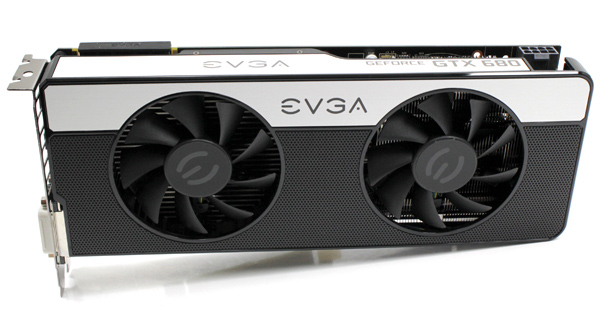
We reviewed the GTX 670 FTW Signature 2 a few days ago here, which features the same Signature 2 cooler. Additionally the GTX 670 FTW SIG 2 uses the stock GTX 680 PCB design and can be easily mistaken for the GTX 680 SC SIG 2. The picture below first shows the GTX 670 FTW Signature 2, followed by the GTX 680 SC SIG 2.
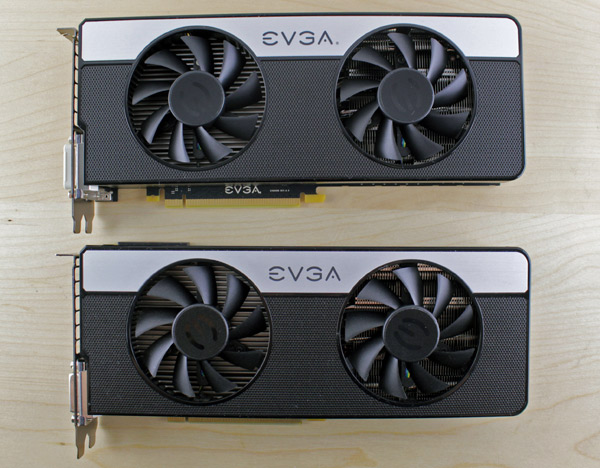
The GTX 680 comes with eight SMX units and 1536 CUDA cores, while the GTX 670 has seven SMX units and 1344 CUDA cores. Of course, additional transistors on the GTX 680 translate into more heat. Factory overclocking on the GTX 680 SC SIG 2 must be addressed with better cooling, and we hope that EVGA’s Signature 2 cooler will do job.
For the GTX 680 SC SIG 2 the GPU base clock is set at 1098MHz, while the typical GPU boost clock is 1163MHz. In comparison, the stock designed GTX 680 runs at 1006 MHz with a typical GPU boost clock of 1058MHz. The reference memory clock is 1502MHz (GDDR5 6008MHz) but the memory on GTX 670 SC SIG 2 is overclocked out of the box to 1552MHz(GDDR5 6208MHz). 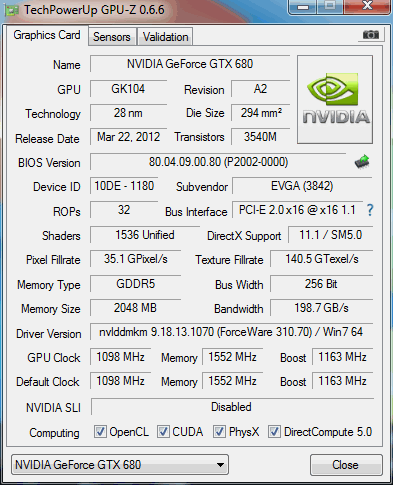
In the box you’ll find:
-User Guide
-Quick Installation Guide
-Driver/Software Disc with EVGA Precision Tuning Utility
-A small note about PCIE 3 compatibility
-A new sticker set (Enthusiast Built)
-EVGA Full Size Poster
-EVGA Case Badge
-DVI to VGA Dongle
-1x Molex to 8-pin Power Adapter
-1x Molex to 6-pin Power Adapter

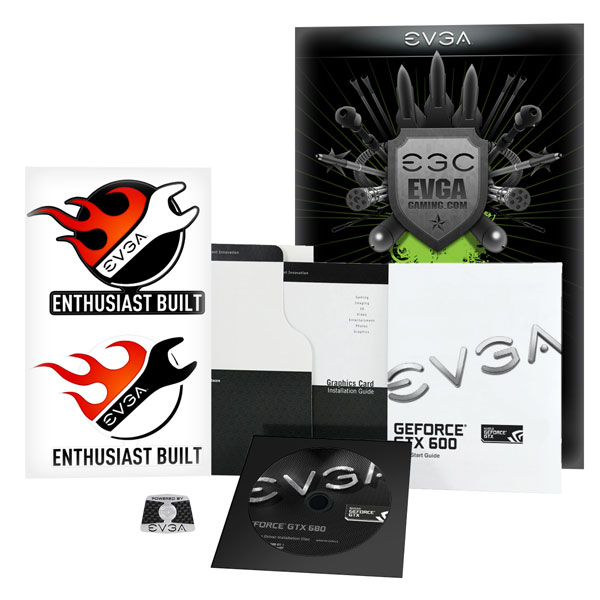
EVGA GTX 680 Superclocked Signature 2 graphics card comes with a dual-fan cooler. Reference cooling employs a radial, blower style fan that pushes the air through the heatsink, dissipating heat from the GPU outside the case through slits in the bracket. The Signature 2 cooler has two 75mm axial-flow fans. So, we’re talking about an open type approach, where fans are positioned over and blow at the heatsink. This also means that hot air stays inside the case. It’s nothing that a few quality intake fans wouldn’t effectively nullify.
EVGA cooler fits within the dimensions of the reference GeForce GTX 680. The card is 25,4cm long, just like the reference GTX 680 and the cooler blocks only one adjacent PCIe slot on the motherboard.
The cooler features just a few screws, so taking the card apart can be done very quickly. The cooling shroud holds two fans. The mesh finish on the Signature 2’s cooler shroud looks quite attractive, but it is also a magnet for dust. It’s nothing that a quick blast of compressed air won’t sort out.
Both fans are connected via four wires and those are gathered into a single cable and routed to the PCB. The fans in question are sleeve bearing units manufactured by Power Logic, designated as PLA08015S12HH, DC 12V, max 0.35A. RPM readouts are possible, as well as manual or automatic fan control.
The nickel-plated Signature 2 cooler looks very well made and it is massive. The heatsink does not stretch through the entire length of the PCB, it consists of two sections. With a help of four thick 8mm heatpipes the heat is moved from the cooler base to auxiliary section which is made of aluminum fins soldered to the heatpipes. The base and heatpipes are made of copper, while the rest is made of aluminum.
Recently we tested the GTX 670 FTW SIG 2 which uses the same cooler where it provide good cooling. The GTX 680 SC SIG 2 uses a more demanding GPU on higher clocks and this will be a real challenge for the Signature 2 cooler.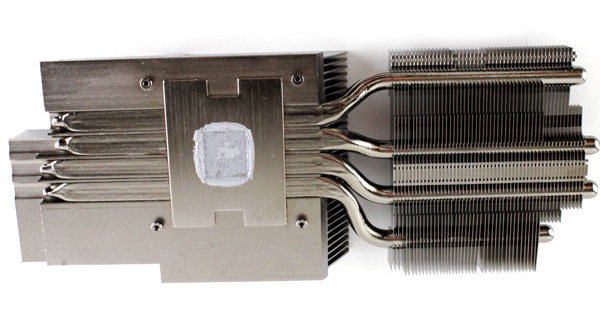
The GTX 680 SC SIG 2 sports five phases for the GPU and two for the memory, while the reference design features four phases for the GPU and two for the memory. GPU voltage regulation is taken care of by Richtek’s RT8802A controller.
EVGA’s GTX 680 SC SIG 2 packs a total of 2GB of GDDR5, in eight memory modules. EVGA overclocked the memory to 1552MHz (6208MHz effectively). The memory chips are made by Hynix and carry the model number H5GQ2H24MFR-R0C. They are specified to run at 1500 MHz (6000 MHz GDDR5 effective).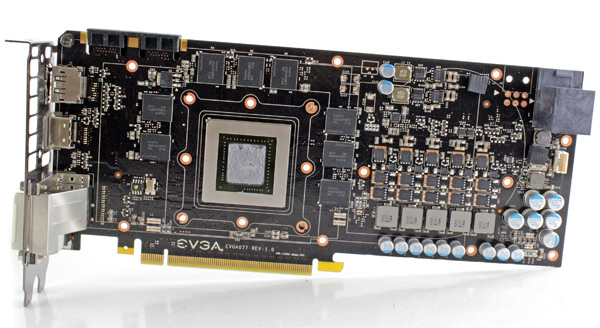
Nvidia’s specs require one 8-pin and one 6-pin power connector since the card’s TDP is 185W.
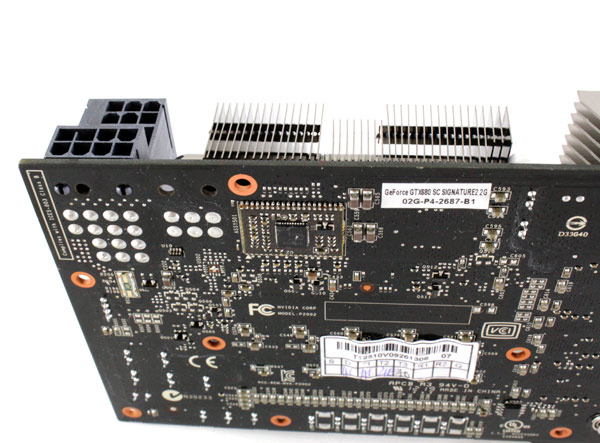
The GTX 680 SC SIG 2 card comes with DVI-I and DVI-D (dual-channel) outs, where only first one is analog VGA-out capable. EVGA made things easy by marking the VGA-capable out with “DVI-I”. The plastic caps are also a nice touch. The I/O panel also features standard HDMI and DisplayPort connectors. Nvidia wanted to make sure that it does not lag behind the competition in multi-display support, so Kepler based cards can run up to four displays simultaneously.
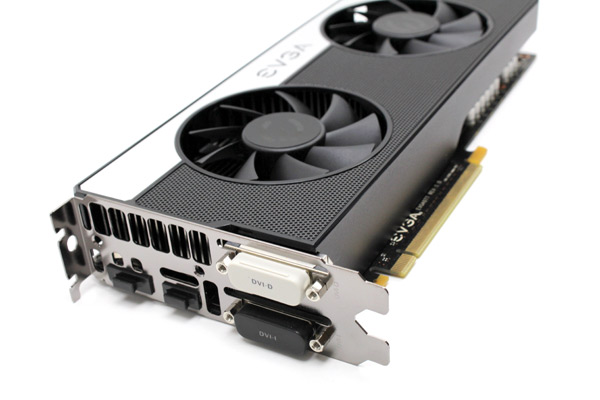
The air exhausts are somewhat bigger than on the reference card. This allows for better airflow, which means hot air will exit the card faster and in turn help the cooler perform a bit better although the cooler design doesn't really call for that.
GTX 680 SC SIG 2 graphics cards come with two SLI connectors, which means it’s possible to daisy chain up to four GTX 680 cards for some serious power.
Motherboard: EVGA X79 FTW
CPU: Sandy Bridge-E Core i7 3820 (3.6GHz)
CPU Cooler: Thermalright HR-02 (Thermalright-Europa Distri www.PC-Cooling.de).
Memory: 8GB ADATA DDR3 1600 XPG Gaming series
Harddisk: OCZ Vertex 2 100 GB
Power Supply: CoolerMaster Silent Pro 1000W
Case: CoolerMaster Cosmos II Ultra Tower
Operating System: Win7 64-bit
Nvidia 310.70-desktop-win7-winvista-64bit-english-whql
AMD 12-11_vista_win7_64_dd_ccc.exe
3DMark11
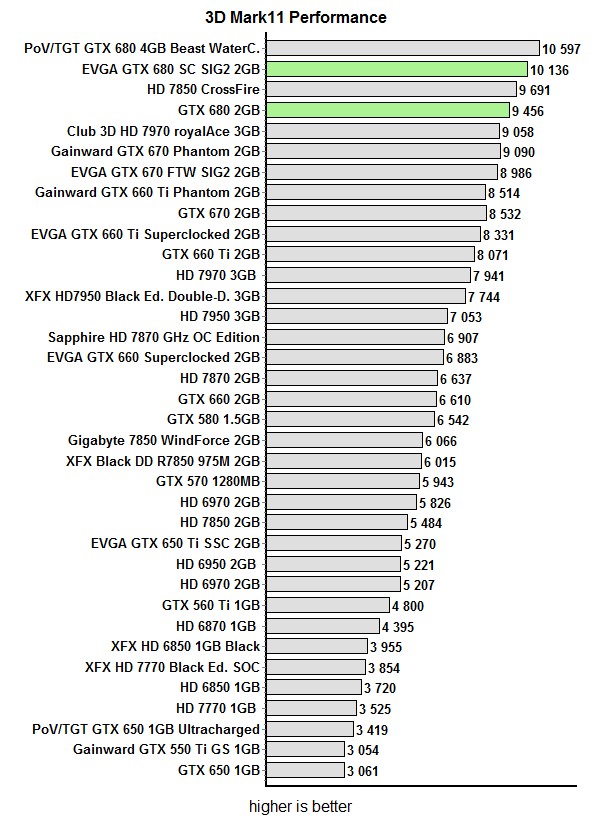
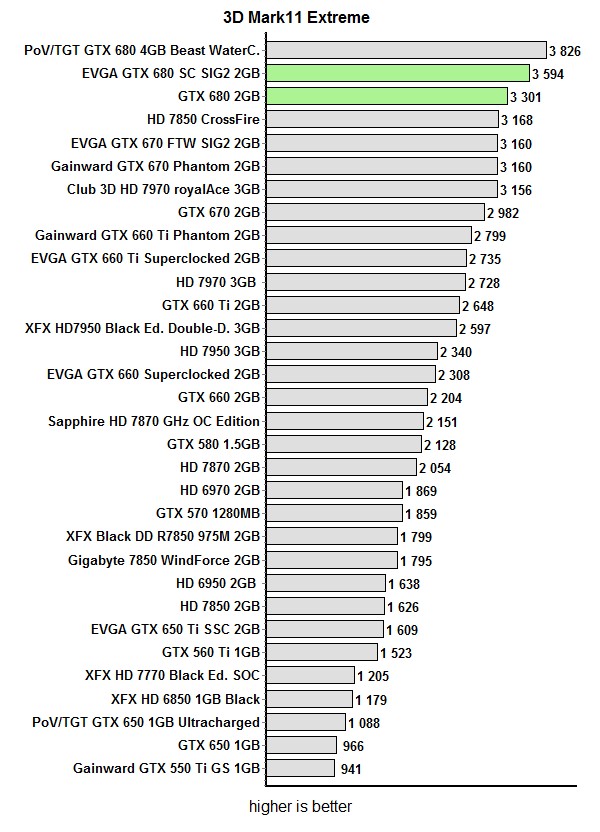
Crysis 2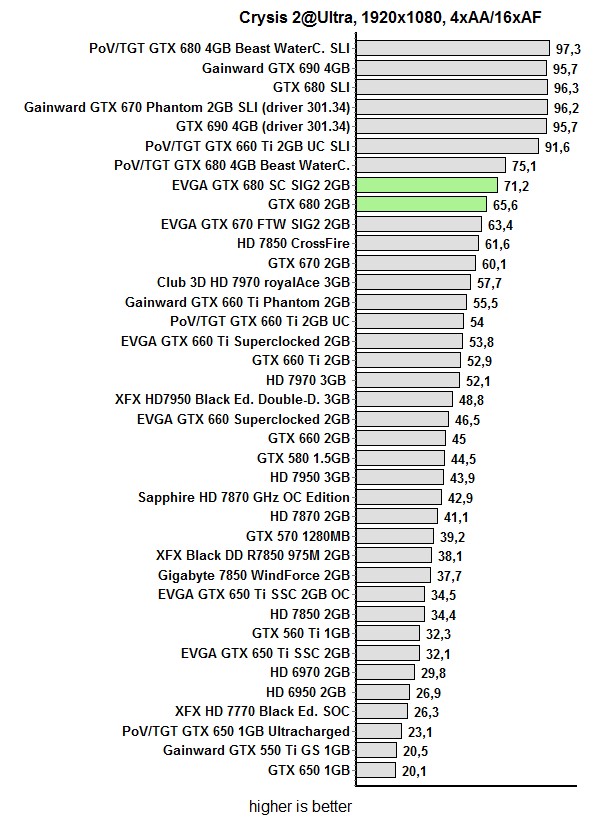
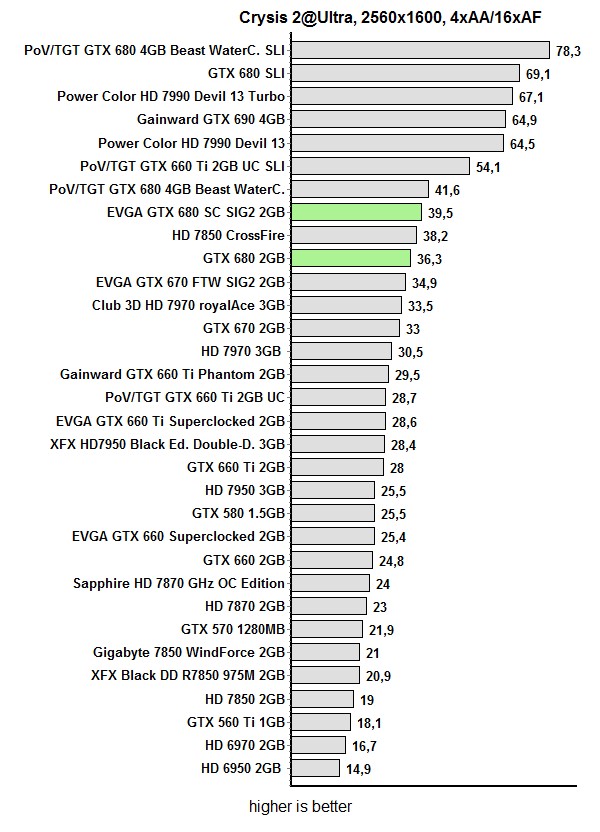
Metro 2033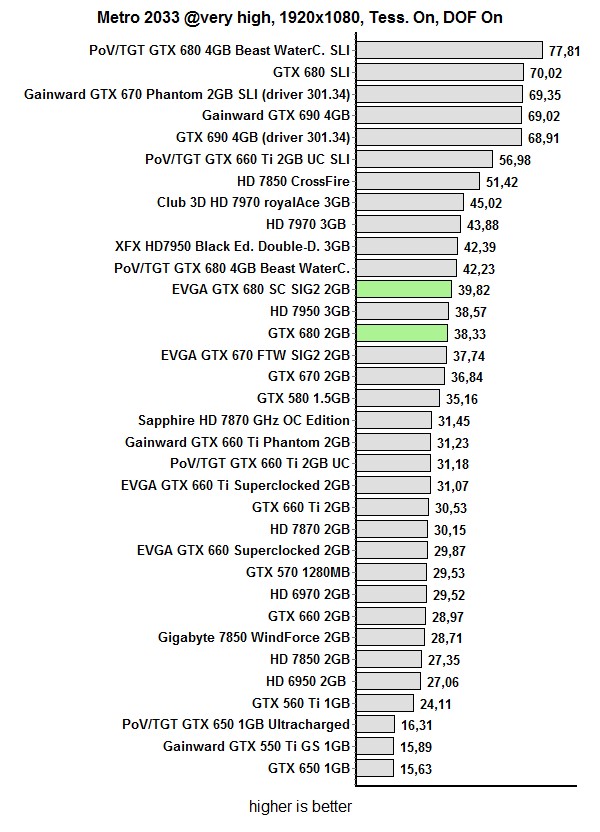
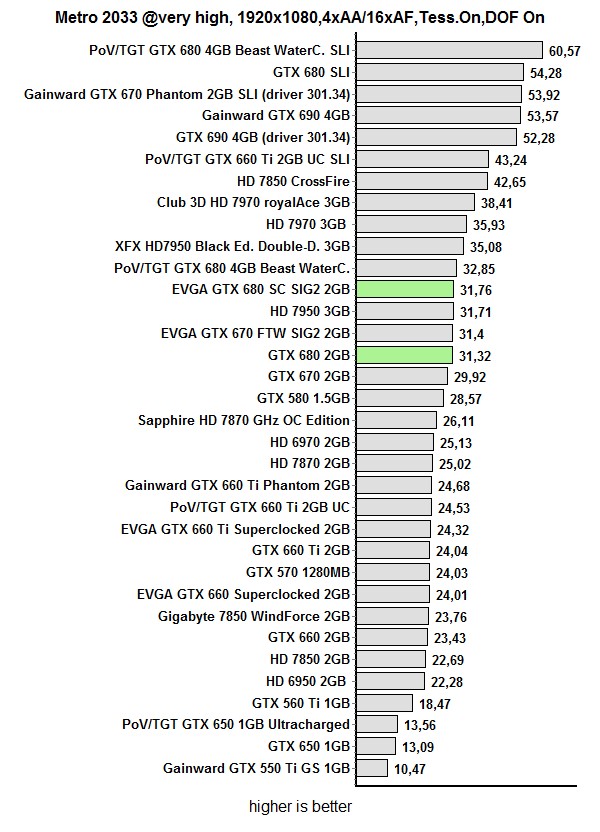
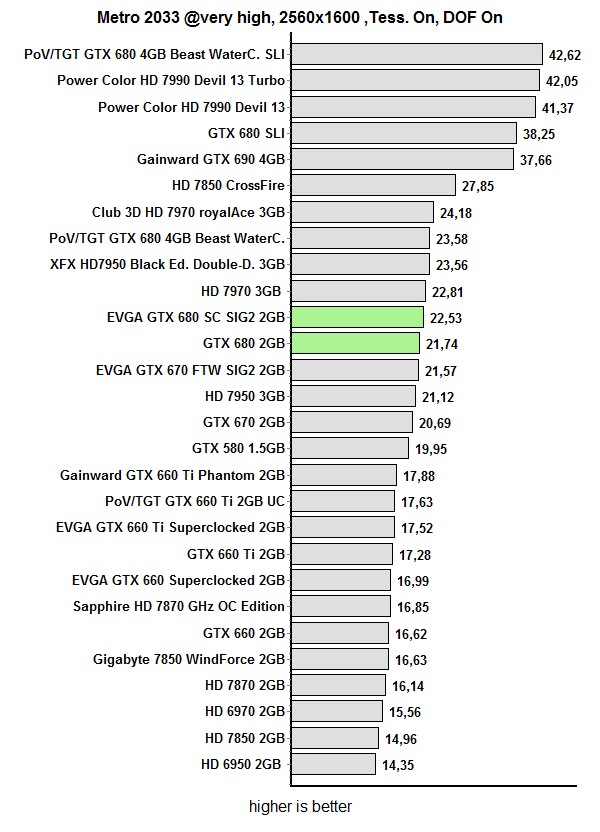
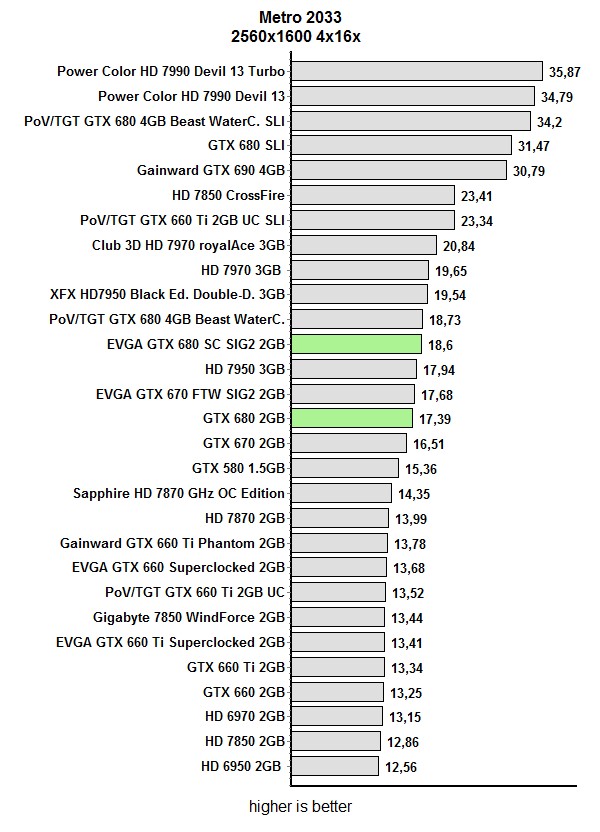
Tessellation: Heaven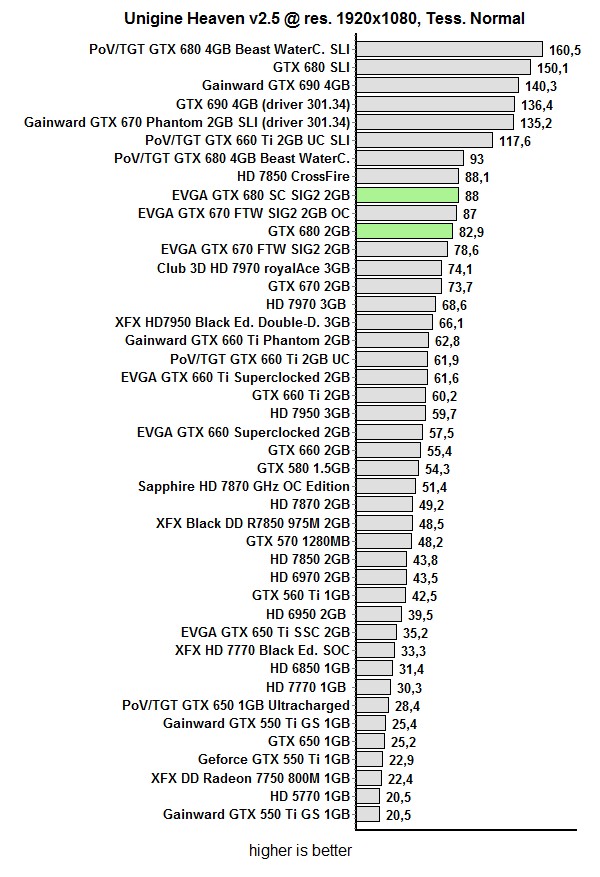
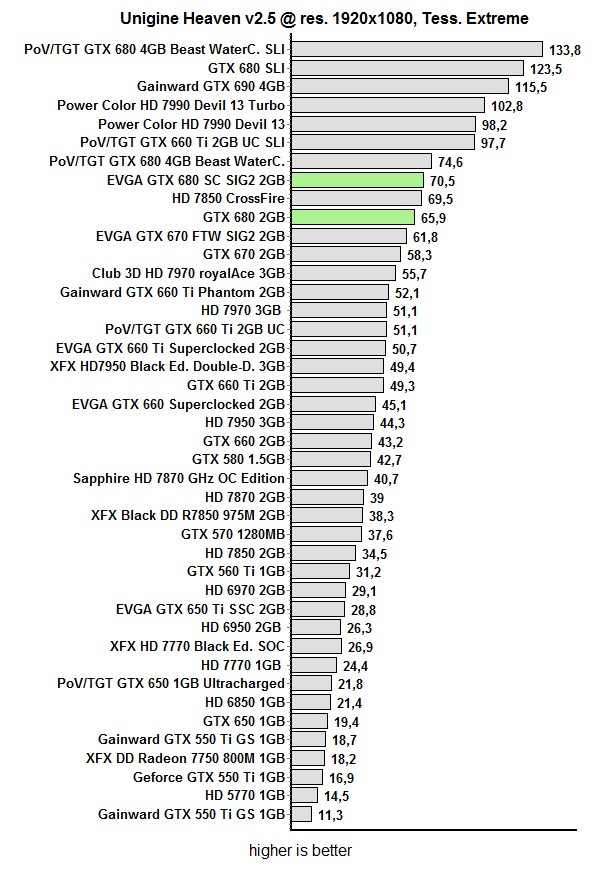
We tried to overclock the EVGA GeForce GTX 680 SC SIG 2 with the Power Target set to the maximum of 125%. We let the fans in auto mode as increasing fan speed made no difference here. We only managed to increase the base GPU clock rate by 30 MHz (GPU clock is overclocked in incremental 10MHz steps), and the memory clock rate by 200MHz (GDDR5 effective 800MHz). This is not much overclocking for the GPU but bear in mind that the EVGA GTX 680 SC SIG 2’s GPU is factory overclocked by 92MHz. With the help of a decent memory overclock we got up to 5% better results.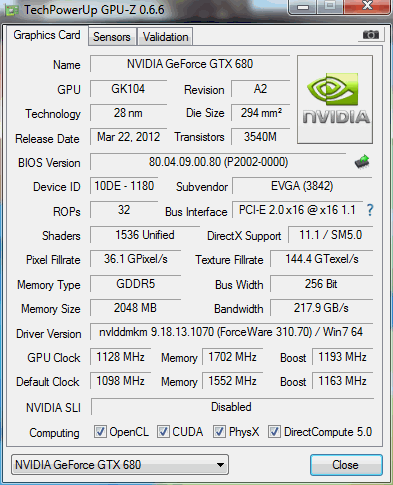
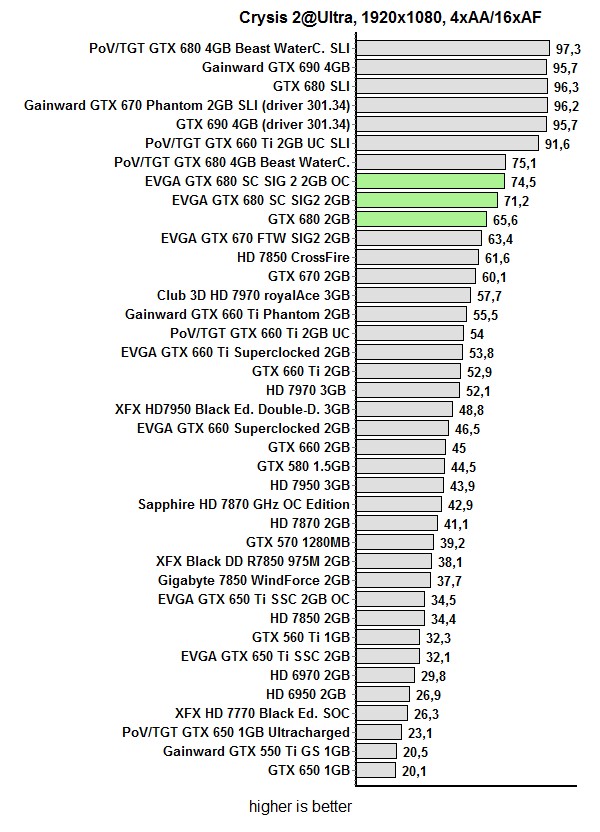
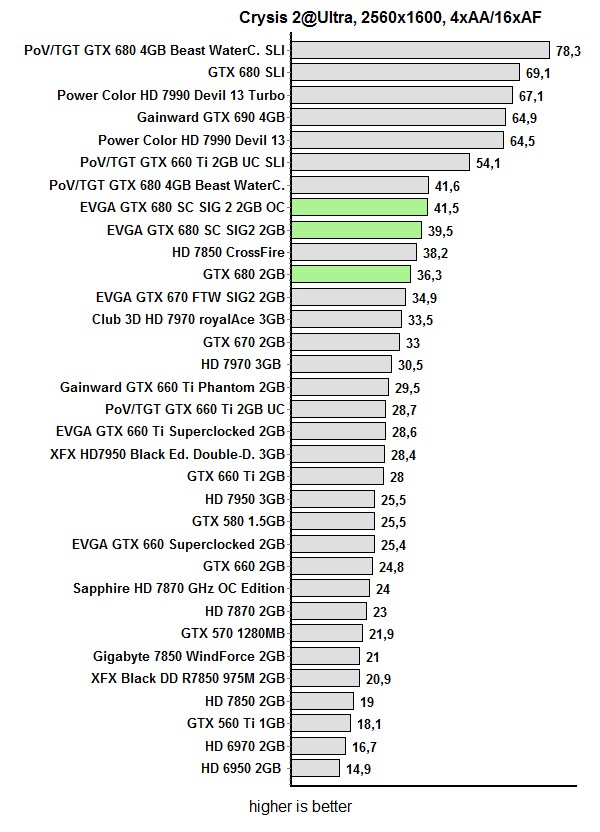
Fan speed is PWM-regulated from about 1100 RPM to 4230 RPM (according to the PrecisionX monitoring tool). The GPU temperature is up to 76°C with the fans regulated automatically. Subjectively said the card remained quiet, we noticed only small changes in noise levels from inside of the closed PC case. 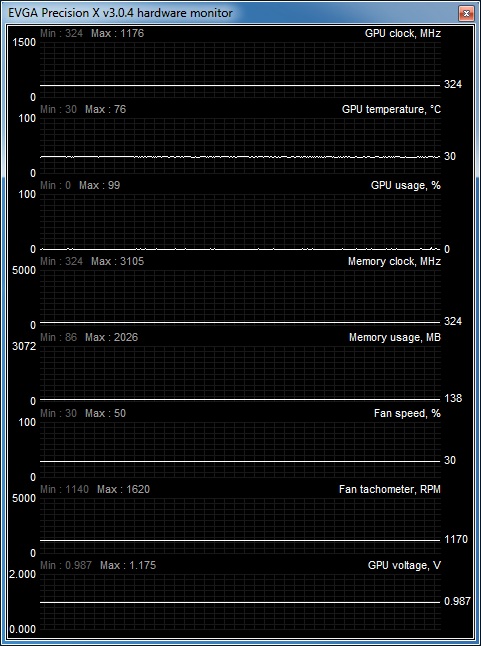
With the fans set at maximum speed the card is really loud but the GPU temperature is only 60°C.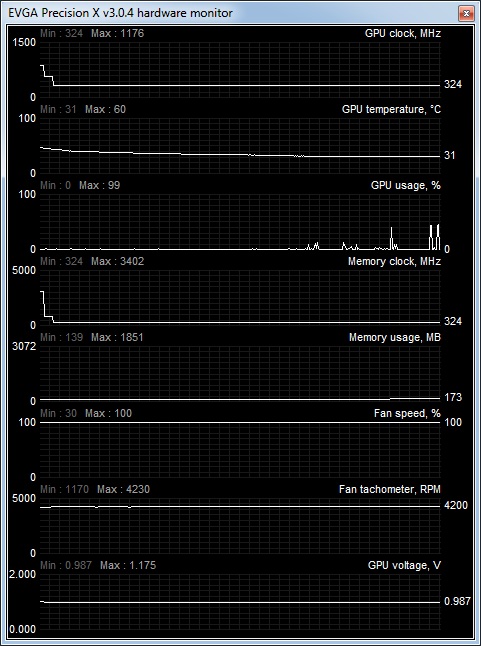
GPU temperatures didn’t exceed 78ºC after overclocking.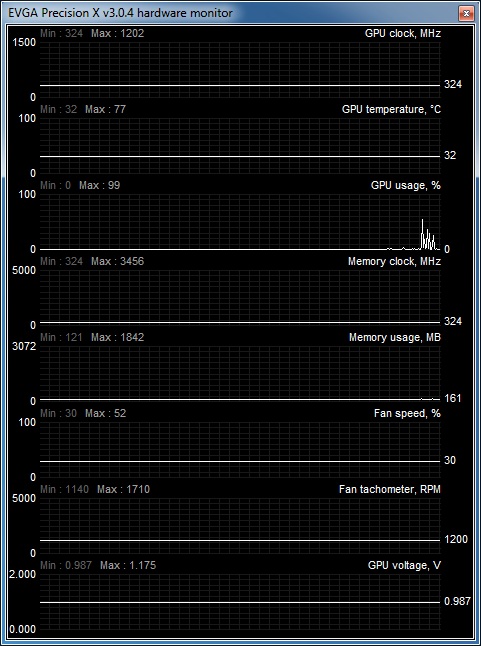
Although it ticks at higher clocks, EVGA’s GTX 680 Superclocked Signature 2’s consumption isn’t noticeably higher than the reference GTX 680 and this is good considering up to 7% better performance of the EVGA card.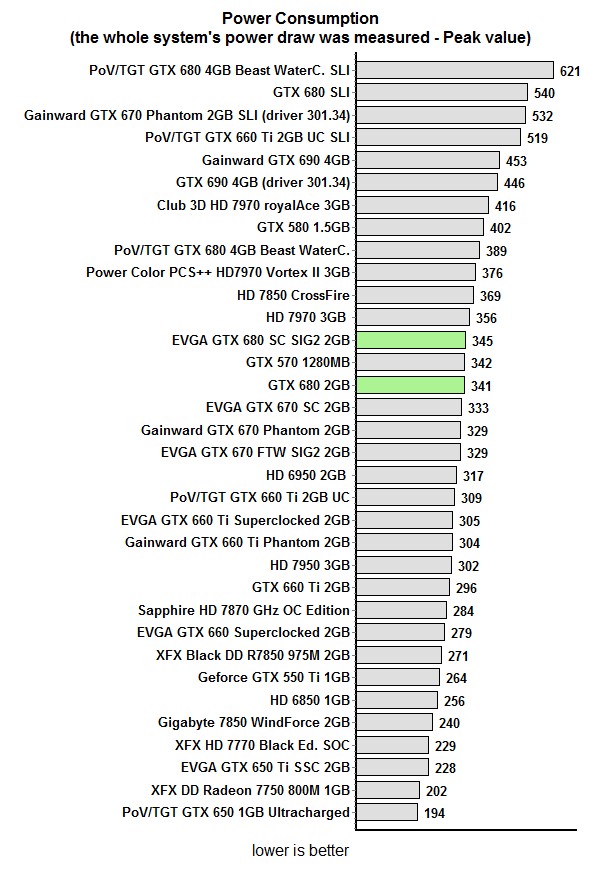
EVGA updated its GTX 680 Superclocked card with Signatre 2 cooler and jacked up the GPU clock, resulting in a new card, the GTX 680 Superclocked Signature 2. EVGA currently offers a total of 12 different GTX 680 cards, catering to a wide range of needs. The Signature 2 aims to address the need for a very quiet card.
The cooler is practically inaudible in idle, but even when the card is operating under heavy load, it tends to stay on the quiet side of things.
The only downside is the lack of additional overlocking potential. With a 30MHz GPU overclock and a 150MHz memory boost, we didn’t break any records, but the real world results are already good enough. Bear in mind that the GPU is factory overclocked by 92MHz, while the memory clock was upped by 50MHz. Memory overclocking is not very popular among Nvidia AIBs nowadays, so we applaud EVGA’s decision to go for a slight factory overclock.
The Signature 2 cooler can deliver lower noise emissions even on a demanding card such as the GTX 680. The card is widely available and in case if you want an overclocked and quiet GTX 680 we can recommend it. Currently the GTX 680 SC SIG 2 card is listed for about €443 and that is some €30 more that EVGA asks for the GTX 680 SC. It's not a huge premium, but we still feel that it could have been somewhat cheaper.



